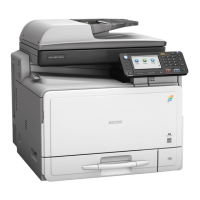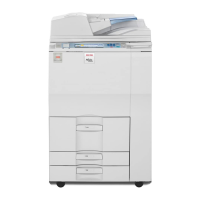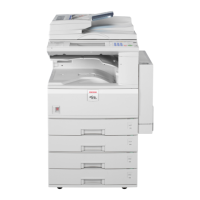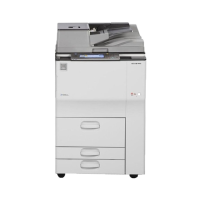Authentication and its Application
48
2
Note
❒ The first time you access the machine, you can use the functions available to
your group. If you are not registered in a group, you can use the functions
available under [*Default Group]. To limit which functions are available to
which users, first make settings in advance in the address book.
❒ When accessing the machine subsequently, you can use all the functions
available to your group and to you as an individual user.
❒ Enter the login password correctly, keeping in mind that it is case-sensitive.
❒ Users who are registered in multiple groups can use all the functions availa-
ble to those groups.
❒ A user registered in two or more global groups can use all the functions avail-
able to members of those groups.
❒ If the "Guest" account on the Windows server is enabled, even users not reg-
istered in the domain controller can be authenticated. When this account is
enabled, users are registered in the address book and can use the functions
available under [*Default Group].
Specifying Windows Authentication
This can be specified by the machine administrator.
Note
❒ Under Windows Authentication, you can select whether or not to use secure
sockets layer (SSL) authentication.
❒ To automatically register user information such as e-mail addresses under
Windows authentication, it is recommended that communication between
the machine and domain controller be encrypted using SSL.
❒ Under Windows Authentication, you do not have to create a server certificate
unless you want to automatically register user information such as e-mail ad-
dresses using SSL.
A Press the {User Tools/Counter} key.
B Press [System Settings].

